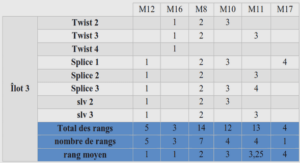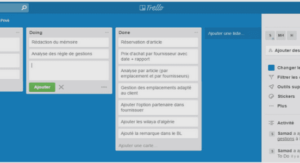Reflectometry Study of Thin Metal Foil Perturbation by a Moderate Intensity Laser Pulse
In chapters Ch.3 and Ch.4 I introduced a few basic concepts on the interaction between a laser pulse and a solid target. Here I focus on the propagation of the shock wave through the bulk and in particular on the evolution of the shock effects on the non irradiated surface (the back surface).The detrimental effects produced by a laser pedestal on the back surface can reduce or destroy the target normal sheath acceleration (TNSA) according to the timescale of propagation of the shock wave through the thin foil. From the moment the interac- tion begins between the pulse pedestal and the overdense matter, the shock wave starts propagating. Once it arrives at the back side of the foil, a new plasma starts expanding in that direction: when a sufficient plasma gradient exists on the surface, the TNSA acceleration is reduced due to the lengthening of the Debye length.In this experiment I use a short laser pulse to monitor the evolution of the electron temperature on the back side of a thin metal foil. The electron temperature is measured through the change in reflectivity of the metal surface. The shock wave is created by ) with the same characteristics thanthe one used for the experiment in Ch.4. This, in turns, will enable us to close the loop between the gradient scale length that is created on the front surface (Fig.4.16) and the The reflectivity of a cold metallic surface, when no density gradient is present, is calcu- lated from the Fresnel coefficients. Let’s consider the problem in the geometry depicted in Fig.5.2. When the S-polarized wave arrives at the interface between the metal (ω uller interpolation between the Spitzer collision frequency for the hot plasma and the electron-phonon collision frequency for the cold limit[14, 94, 20].
The collision frequency in the cold limit depends on the ion temperature. For a given electron temperature, a decrease in the ion temperature will reduce the collisionality in the cold limit, which increases the contribution of ν As in the previous experiment two beams are obtained from the laser chain of the Salle Verte (Ch.4). The most intense one is focused to produce a plasma on thin Aluminum foils (3µm, 2µm and 800nm); the less intense is delayed through a variable delay line, doubled in frequency and reflected and diffused by the rear surface of the metallic target. Here’s a brief description of the realized setup.Pump Beam The beam is focused by a single lens of f = 1000mm. The focal spot is sent by a removable mirror to a microscope objective and imaged on a 12bit camera (Fig.5.4-5); the image is used to correct the lens tilt, controlling the aberrations, and to measure the size and the energy content of the focal spot. The obtained spot exhibits (Fig.5.5) an average diameter on the 1/e .
of (i) increasing the beam intensity without focusing it and (ii) enhancing its quality (the transverse profile is cleaned on the focal plane of the first lens by a pinhole of φ = 200µm). I decided to avoid the usual procedof (i) increasing the beam intensity without focusing it and (ii) enhancing its quality (the transverse profile is cleaned on the focal plane of the first lens by a pinhole of φ = 200µm). I decided to avoid the usual procedure in reflectometry measurements of focusing the probe beam on the target surface. In fact, the poor optical quality ofure in reflectometry measurements of focusing the probe beam on the target surface. In fact, the poor optical quality of common thin targets, in conjunction with the increased beam divergence, would result in a larger spread of the reflected/diffused light cone.To be able to analyse the reflectivity map, a precise knowledge of the fluctuations in laser intensity, between the recording of the reference and the shot image, is needed. For this purpose, a glass blade (150µm, Fig.5.4-4) sends a small part of the probe energy to a 12bit camera. For every shot, the integrated image on this camera is used as an intensity reference.The area on the target surface that corresponds to the pump axis is imaged by an achromatic doublet on a 16bit camera (Andor DV434). The doublet is a f = 150mm, φ = 75mm; its very large numeric aperture lets us collect the biggest part of the re- flected/diffused light and obtain a good magnification. The images in blue light (probe) on the camera (Fig.5.4-7) have a final resolution of 2.38µm/pix, producing a total im-aged square of ≈ 2.5mm by side (1024 × 1024 pixels).



